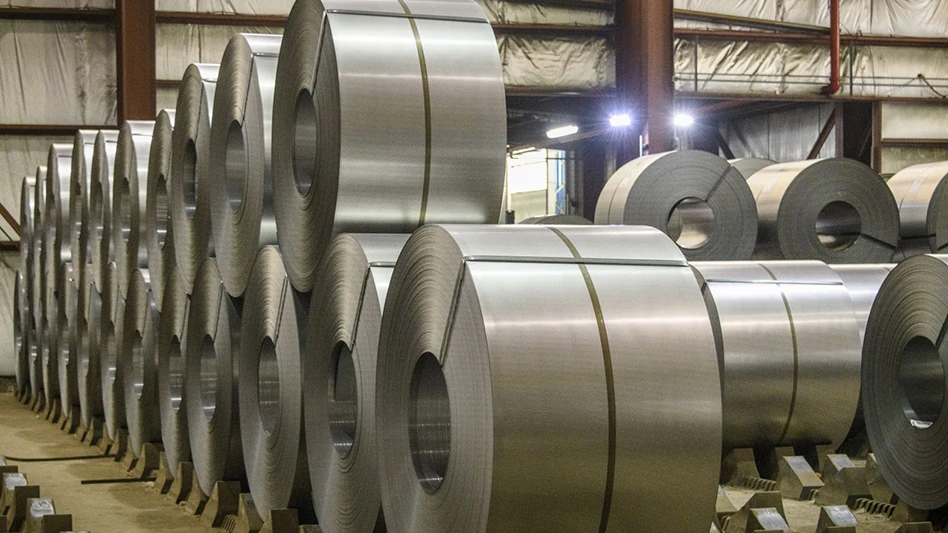CONSTRUCTION SPENDING REMAINS BUOYANT Despite stock market doldrums and several high-profile layoff notices, U.S. companies, individuals and governments continue to spend on construction projects. Figures compiled for March 2001 show $854.4 billion in spending on construction projects committed in that month, up from both the previous month and from year-ago levels. The construction segment has held up well in late 2000 and early 2001 compared to the other major segments of the economy, including both manufacturing and technology. Economists point to low interest rates as a boost to both the housing and commercial construction sectors. The March 2001 figures reveal a 3.4% increase in commercial projects undertaken by private companies over the previous month. New residential project spending was up just 0.3%, while home renovation spending increased by 3.4%. The government sector upped its spending by 1.3% for schools, hospitals and highway projects. Stadium Recycling Project Halted What was supposed to be a textbook example of on-site concrete crushing at the former Milwaukee County Stadium in Wisconsin was foiled by the presence of asbestos. During the 50,000-ton crushing project, an inspector from the Wisconsin Department of Natural Resources (DNR) determined that not all asbestos had been removed from the structure, and that the entire on-site crushing operation should be halted due to the discovery, thus sending 40,000 tons of uncrushed concrete to a landfill. There are concerns among recyclers that the ill-fated project could cause officials in to put a more restrictive permitting process in place for on-site crushing. William Turley, president of the Construction Materials Recycling Association, Lisle, Ill., says Wisconsin is not the only state where on-site crushing is facing increased scrutiny. Other states, including Texas and Illinois, are requiring permitting for on-site projects. “The problem is the states are usually slow in giving the site permit on demolition jobs,” says Turley. “By the time the permit is received, and 60 days is the minimum, the job could be gone.” The concrete has been hauled to either a landfill or some other site, and the trucks have again clogged traffic and added air pollution.” Turley notes that in the case of the former Milwaukee County Stadium, the switch away from on-site crushing meant about 2,500 trucks used about 75,000 gallons of fuel to haul the 40,000 tons of demolition concrete to a landfill. An equal number of trucks are bringing in natural aggregate to replace the processed concrete. Only about 1,600 gallons of fuel would have been used to process the concrete (on site) into a base product. Web Site Targets Soil Recycling The owner of a construction management company has co-founded www.dirtmarket.com, Campbell, Calif., as a way to arrange deals between producers and buyers of excavation dirt. “Much of the material put into landfills from excavation is clean, construction grade or better material. In other words, it could all be recycled for good use,” says David Rossi, co-founder of the Web venture and owner of a construction management company. “A lot of clean material sent to a landfill could be reused on farms, construction sites, reclamation projects and other projects .” Rossi sites as an example the nutrient-rich, wetlands grade material dredged by the Port of Oakland in California. The Port may spend up to $40 per cubic yard to haul and landfill the material. When a dredging project produces one million cubic yards of material, that’s a $40 million cost. If projects needing the same type of material can be found (especially at a closer distance), both the generator and the buyer of the material can save significantly, says Rossi. The Web site will initially focus on bringing contractors in northern California together in a “community” format. EUROPEAN PAVEMENT RECYCLING REVIEWED Members of an American delegation that visited several European countries to observe pavement recycling techniques related their findings at a U.S. Department of Transportation (DOT) event held in Houston. The U.S. delegation visited Germany, France, the Netherlands, Sweden and Denmark, meeting with government officials, researchers and contractors in those nations. According to a report in the newsletter of the Asphalt Recycling & Reclaiming Association (ARRA), Annapolis, Md., the Netherlands has a formal highway construction sustainability policy that minimizes the use of virgin aggregates and advocates the use of recycled ones. Nonetheless, most of the countries visited also require that recycled materials meet the same specifications as virgin materials, and that they provide equal performance and longevity. Attendees at the Houston event included highway agency staff, recycling advocates, researchers, contractors and their suppliers. A follow-up step set in motion at the workshop was establishing a national steering committee to further the concept of recycling in the highway repair environment. The committee would ideally consist of representatives from state and federal highway agencies and from the private sector. The committee would also explore legislation that would help promote recycled materials demonstration projects.

Explore the May 2001 Issue
Check out more from this issue and find your next story to read.
Latest from Recycling Today
- Magnomer joins Canada Plastics Pact
- Electra names new CFO
- WM of Pennsylvania awarded RNG vehicle funding
- Nucor receives West Virginia funding assist
- Ferrous market ends 2024 in familiar rut
- Aqua Metals secures $1.5M loan, reports operational strides
- AF&PA urges veto of NY bill
- Aluminum Association includes recycling among 2025 policy priorities





